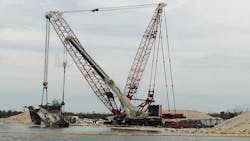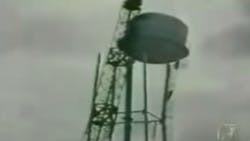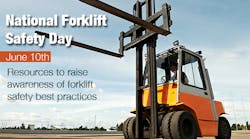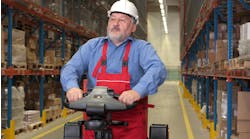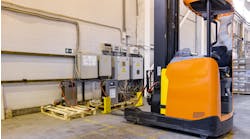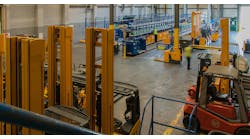I was expecting to get grief from providers of online forklift training programs for my blog titled “Beware the Dangers of Forklift Certification.” So far my feelings are still intact. In fact I actually received an e-mail from a powered industrial truck operator trainer at a manufacturing site stating that he was still “smiling ear to ear” because he has been preaching this message for years. To him, such certification is meaningless when presented by new hires.
“We put every new lift truck hire through our training program, no matter how long they have operated a type of powered industrial truck,” he told me. “We tell them upfront, ‘It is not because we don’t think you can’t operate the equipment, it is because we want to make you aware of our safety standards and to have everyone on the same page.’ We do not give anyone a pass just because they have driven a lift truck in the past.”
It’s a good thing, too, because he’s amazed how many experienced operators who go through his safety course have trouble with some of the exercises. They say things like “No one has ever explained the data plate like you did,” or “I never heard of the term ‘plugging.’”
Good training makes the difference between industrial equipment being used as tools or weapons. As tools, industrial trucks and cranes can apply enormous power to accomplish seemingly impossible tasks, as you see below.
This shows Crane Rental Corporation’s crawler crane being used to recover a company’s 484,000-lb. Manitowoc dragline that had slipped off a bank into 70 feet of water. The tremendous power it took to raise this thing safely could have also done tremendous damage if there had been a miscalculation. It took training to make sure everyone involved understood the nature of the task and the capabilities of their equipment. You can see the result above. But as you’ll read in the OSHA reports below, miscalculations happen all the time. Most of them are preventable with the proper training. The following represent a handful of the hundreds of field reports posted to OSHA’s website:
- Oct. 23, 2012: At Hawthorne Pacific Corp. in Kahului, Maui, a heavy equipment rental and repair company, an industrial boom truck crane fatally crushed a worker. Outriggers designed to stabilize the truck-mounted crane were not extended, allowing it to tip. The company also failed to properly inspect and maintain records of critical items on the crane, which had been out of service for more than six months.
- Nov. 19, 2013: At Nicholson Terminal & Dock Co. in Detroit, a worker was struck by a 62,000-pound-capacity forklift carrying a 40,000-pound steel coil. A willful citation was issued for failing to establish vehicle routes, traffic rules and to post signs indicating pedestrian traffic where employees work. Seven serious safety violations were cited, five of which involve forklift safety, including failing to train employees on operating instructions, warnings and precautions listed in the operator's manual; maintain vehicles in safe working order; and direct employees to sound the horn when visibility was obstructed. Other citations involved failing to conduct monthly crane inspections and test cargo gear for load capacity.
- November 2013: At Georg Fischer Central Plastics LLC and Nationwide Plastics Inc. in Dallas a worker and a self-employed truck driver were struck and killed by a forklift. The Georg Fischer employee and the truck driver were caught between a forklift and a flatbed trailer being loaded with plastic pipe. Georg Fischer and Nationwide Plastics occupy the same commercial space. Both companies were cited for 16 serious safety violations including failure to ensure all workers completed required forklift training, failing to block wheels of powered industrial trucks parked on inclines; and failure to plainly mark the rated loads on each side of a crane.
- December 2013: At KWS Manufacturing Co. Ltd. in Burleson, Tex., a worker was killed when his left arm was caught in the unguarded rotating parts of a machine he operated. Subsequently, he became entangled and was flipped several times before the machine was turned off. Aside from the employer's disregard for OSHA's machine guarding standards it was also cited for 14 serious safety violations including failure to inspect overhead cranes, hoists, hooks and slings regularly; failure to rate job fabricated lifting devices; failure to guard belts and pulleys; and failure to provide training to overhead crane and forklift operators.
Many industrial truck and crane incidents don’t involve fatalities and therefore don’t involve OSHA because they go unreported. Nevertheless, there’s plenty of video evidence of the damage the unharnessed power of these machines can cause. We’ve posted several galleries involving forklifts, but with cranes being cited in many of the same OSHA reports, we thought it prudent to give them equal time. We hope you’ll make a similarly generous time investment in operator training.

